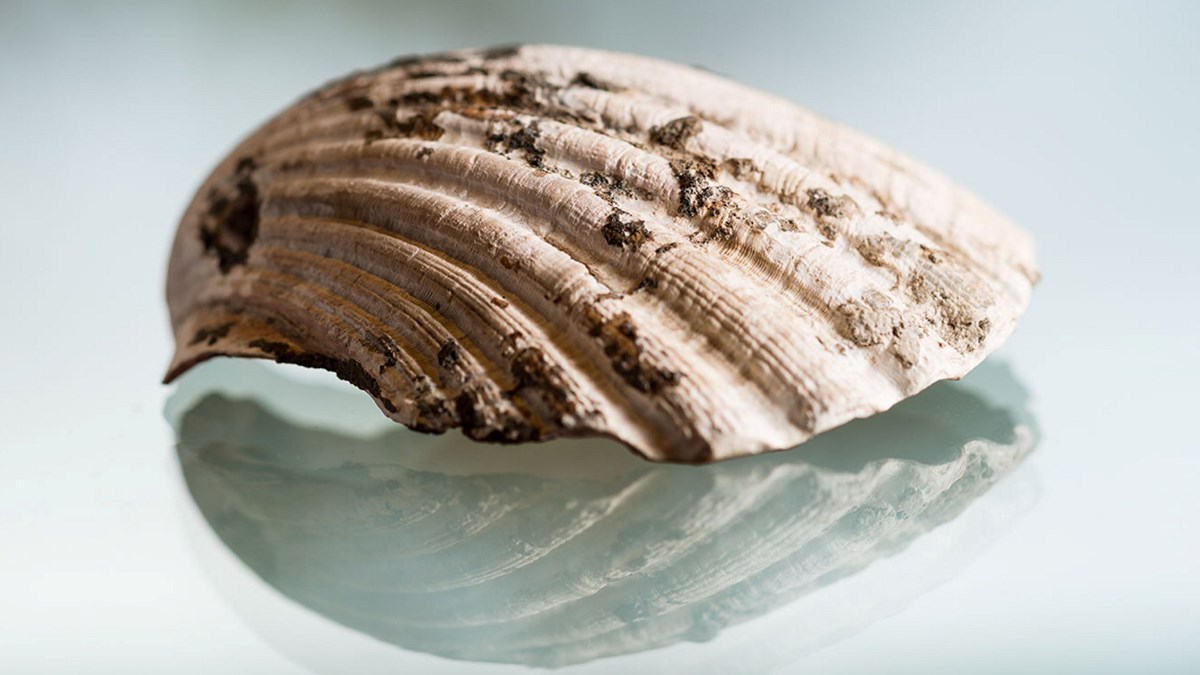Scallop shell

In Lödöse, they found what is known as a scallop shell of Saint James. The shell came from Santiago de Compostela in Spain and dates from the 12th century. James the Apostle was the patron saint of pilgrims and his burial place is one of the most revered pilgrimage destinations in Europe.
11 pilgrim’s badges were found in mediaeval Lödöse. With the pilgrim movement, closer ties were established between the Nordic region and Europe. Millions of people were constantly on the move, and it was estimated that between 1150 and 1450, some 20-50 per cent of the adult population in Europe went on pilgrimages.
James the Apostle and the scallop shell
James the Apostle died in 44 AD. He was one of the twelve apostles of Jesus Christ and the brother of John the Baptist. James the Apostle was the patron saint of pilgrims and his burial place is in Santiago de Compostela, one of the most revered pilgrimage destinations in Europe. James is often depicted with his own pilgrim’s badge, the scallop shell. This pilgrim’s badge, or scallop shell, was found in Lödöse and dates from the 12th century.
Pilgrimages
Pilgrimage destinations were holy places where there were relics or other religious objects. Sometimes people went on a pilgrimage to atone for a crime, although in many instances they were in search of a cure for an ailment. Those who helped pilgrims by providing food or accommodation were also considered to have performed a good Christian deed.
What is a pilgrim’s badge?
Pilgrims could be recognised from their attire: a hat, staff and bag. The major pilgrimage destinations were Jerusalem and the Church of the Holy Sepulchre, the grave of Saint Peter the Apostle in Rome, the grave of James the Apostle in Santiago de Compostela, Vadstena in Sweden, and the grave of Saint Olaf at Nidaros (Trondheim) in Norway. On arrival at the pilgrimage destination, the people purchased their pilgrim’s badge. The badge meant that sometimes they were allowed to touch the relic and as a result the badge acquired mystical healing powers. The pilgrim’s badge was also proof that you had completed your pilgrimage.
One person in particular who travelled from Lödöse was Birger Persson, a high-ranking judge, who embarked on his pilgrimage in 1321. His daughter, Birgitta Birgersdotter (Saint Birgitta), and her husband, Ulf Gudmarsson, also passed through Lödöse on their return journey from Santiago de Compostela.






